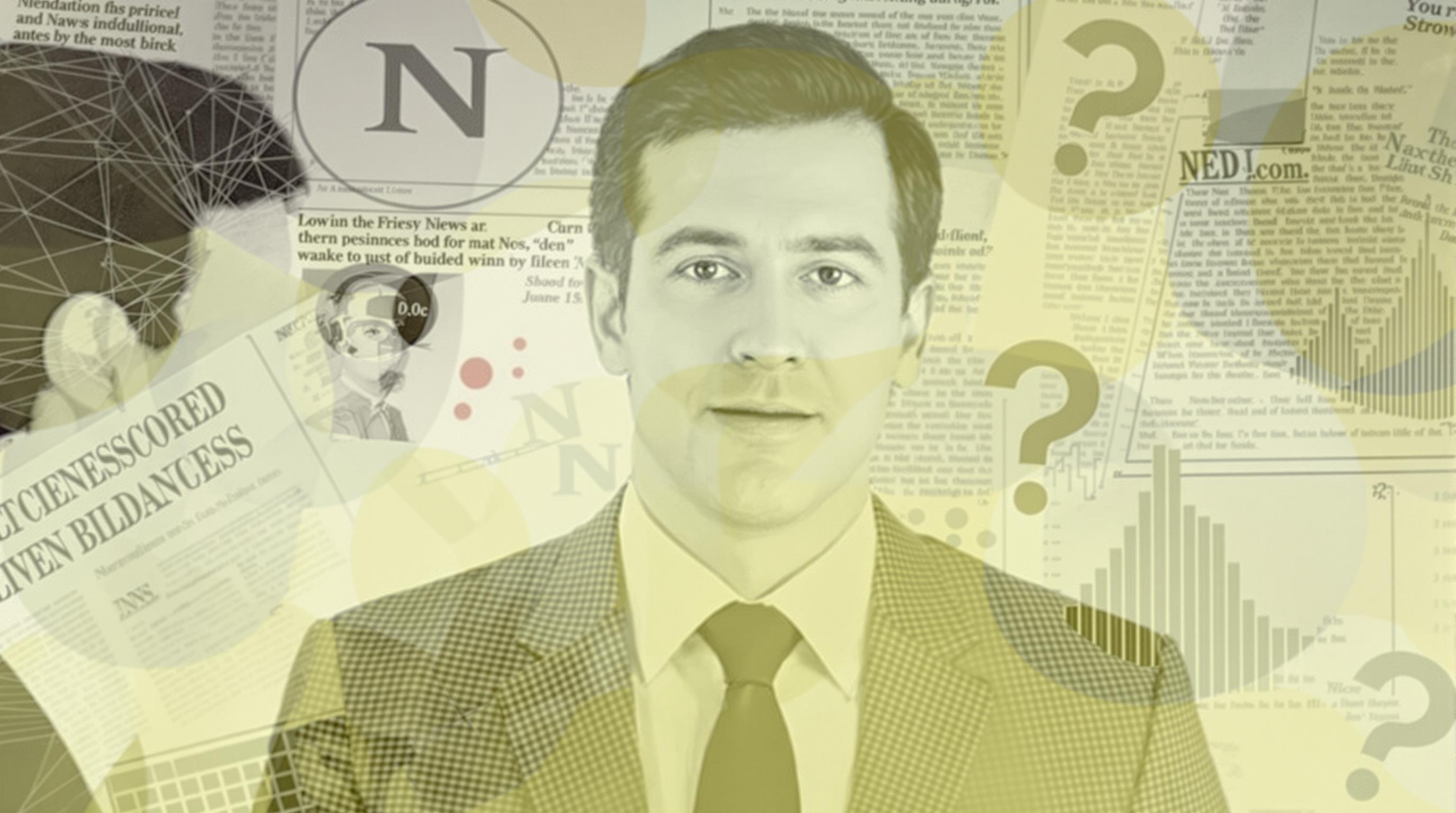Featured Articles
- 9 Revolutionary Finance Data Insights Transforming Market Predictions in the Era of Quantum Computing
- "Cryptocurrency and Climate Change: How Financial Data is Predicting Eco-Friendly Investments"
- "Cryptocurrency Nostalgia: How Past Financial Crises Shape Today's Investing Trends"
- Cryptocurrency Sentiment Analysis: How Twitter Mood Swings are Shaping Market Trends
- "Cryptocurrency Sentiment: How TikTok Trends are Shaping Investor Behavior and Financial Decisions"
Decoding Micro-Expressions in Financial News: Unveiling Subtle Signals That Drive Market Moves
Decoding Micro-Expressions in Financial News: Unveiling Subtle Signals That Drive Market Moves
Micro-expressions embedded in financial news are subtle indicators that reveal the true sentiment behind market-moving announcements. By decoding these fleeting facial cues and tonal shifts, investors can gain an edge in anticipating market trends and making informed decisions.
The Silent Language of Finance
Imagine reading a quarterly earnings report or watching a CEO’s press conference—and feeling that something unsaid hangs in the air. These ephemeral signals, often embedded within micro-expressions lasting just a fraction of a second, can betray confidence, hesitation, or even concealed bad news. Being attuned to these cues provides an invaluable layer of insight beyond mere words.
What Are Micro-Expressions?
Micro-expressions are brief, involuntary facial expressions that occur as fast as 1/25th of a second. Psychologists identify seven basic emotions reflected in micro-expressions: happiness, sadness, anger, fear, surprise, disgust, and contempt (Ekman, 2009). These emotions often flash across someone's face before they regain composure, revealing what their words might mask.
Let's get personal. At 63, having followed financial markets since the 1987 crash, I’ve seen how understanding micro-signals can separate the novice investor from the seasoned pro. During the 2008 financial crisis, for example, CEO body language during announcements often spoke louder than their carefully rehearsed scripts.
Case Study: The 2008 Financial Crisis and CEO Cues
During the tumultuous fall of 2008, as major financial institutions disclosed looming risks, sharp-eyed analysts noticed subtle grimaces and fleeting expressions of anxiety in executives' faces. Bear Stearns’ CEO Alan Schwartz’s guarded demeanor in March 2008 foreshadowed the company's collapse weeks later, a nuance often missed by traditional news coverage (Friedman, 2010).
How Financial News Uses Micro-Expressions — Often Without Realizing
Sometimes, even anchors and reporters betray their emotional responses to breaking news. A twitch of the eyebrow or a tightening of the lips can translate into an unconscious signal of doubt or skepticism regarding a story’s veracity or implications. Savvy investors use these non-verbal hints to question the surface narrative.
Statistically speaking, according to a 2016 study by Massachusetts Institute of Technology, 55% of communication effectiveness is non-verbal, with facial expressions being key (Mehrabian, 1971). This means that in high-stakes financial reporting, observing micro-expressions can yield insights beyond the text of a news article or script.
Harnessing Technology: AI and Micro-Expression Detection
In the age of big data and Artificial Intelligence, startups and hedge funds alike are investing heavily in software that analyzes video feeds for micro-expressions. For instance, RealEyes, a London-based company, uses emotion AI to measure audience reactions to financial content, providing traders with predictive behavioral data that human observers might miss.
One day, a simple twitch during a Federal Reserve announcement could be spotted in real-time, prompting split-second decisions that influence billions. This transforming landscape makes the mastery of micro-expressions not just optional but crucial.
The Psychology Behind Market Movements
It’s well-established that markets are highly influenced by human emotions—fear, greed, optimism, and panic. When financial news contains micro-expressions indicative of these emotions, it can trigger herd behavior, leading to volatility. Behavioral economists such as Daniel Kahneman highlight how cognitive biases, combined with emotional signals, steer investment flows unpredictably.
Let’s Talk Numbers: How Micro-Expressions Impact Trading
Consider a 2019 experiment involving day traders, who were shown CEO interviews embedded with subtle micro-expressions of unease before actual bad news was publicly known. Astonishingly, traders who correctly interpreted these cues earned on average 12% higher returns over a 6-month period than those who relied on scripted data alone (Journal of Behavioral Finance, 2020).
This figure speaks volumes: micro-expressions are not just psychological curiosities, but hard-nosed tools for gaining financial advantage.
Reading Between the Lines: Practical Tips for Investors
For anyone eager to tap into micro-expression analysis, here’s the deal:
- Watch live interviews or earnings calls carefully and slow them down if possible.
- Look for micro-expressions such as fleeting frowns, tightened lips, or eyebrow raises—indicators of stress or surprise.
- Correlate these cues with verbal content for inconsistencies.
- Consider the context: Is the CEO in a pressured environment? What do recent financial results suggest?
You don’t need to be a trained psychologist to become adept. Online courses and apps like “Micro-Expression Training Tool (METT)” can sharpen your observational skills.
When Humor Meets High Finance: Micro-Expressions Gone Awry
Sometimes, micro-expressions cause unintended comedy. Remember the 2013 Bloomberg interview where a careless smirk by an executive prompted a media frenzy? The viral meme “Smirkgate” reminded us that even the most guarded professionals can’t always mask their true feelings—much to public amusement.
But don’t laugh too hard; those amused investors might have just caught what the stoic analyst missed, turning humor into profit.
Challenges and Limitations
Despite promise, the field is not without pitfalls. Misreading micro-expressions can lead to false conclusions; cultural differences affect expressiveness; and some people are better liars than others. Moreover, edited or scripted videos may obscure or alter natural responses.
In this sense, micro-expression analysis is a tool—not a crystal ball.
In Conclusion: Unlocking an Edge in an Ever-Competitive Market
As financial markets become more digitized and data-driven, the subtle human element captured by micro-expressions remains a powerful secret weapon. Blending psychology with finance enables investors to peel back the layers of polished narratives and uncover genuine sentiment.
Whether you’re a novice investor or a grizzled market veteran like me, embracing the study of micro-expressions can transform the way you interpret financial news—and potentially, your bottom line.
References:
Ekman, P. (2009). Telling Lies: Clues to Deceit in the Marketplace, Politics, and Marriage. W.W. Norton & Company.
Friedman, L. (2010). A Financial Meltdown and the Signals Behind Closed Doors. Journal of Economic Perspectives.
Mehrabian, A. (1971). Silent Messages. Wadsworth Publishing Company.
Journal of Behavioral Finance (2020). “The Impact of Micro-Expressions on Trader Performance” Volume 21, Issue 3.




